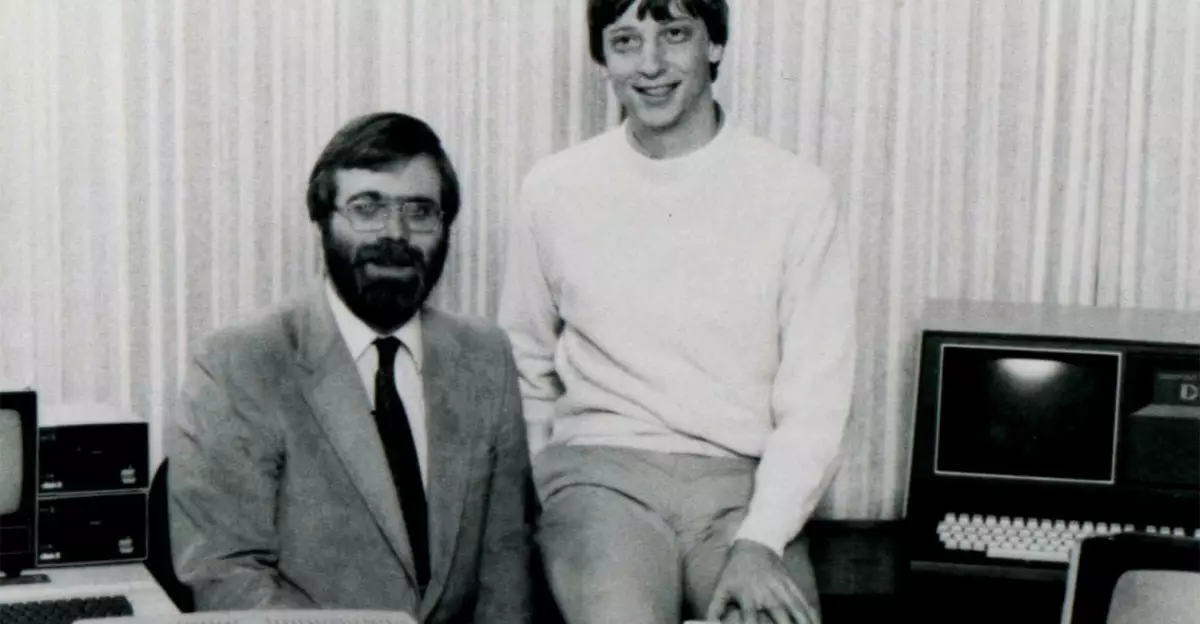In the ever-evolving landscape of technology, few names resonate with the level of influence and innovation as Microsoft. Founded on April 4, 1975, by Bill Gates and Paul Allen, Microsoft’s journey began as a software development company focused on microprocessors. The duo’s vision came to fruition when they created software for the Altair 8800, an early personal computer that marked the dawn of a new era in computing. This initial venture set the stage for what would become one of the most formidable empires in tech history.
The company’s foundational premise was simple yet powerful: to make computing accessible to the masses. This democratization of technology was cemented with a pivotal partnership with IBM in 1980, leading to the creation of MS-DOS. As MS-DOS became the operating system of choice for IBM-compatible PCs throughout the 1980s, Microsoft began its meteoric rise, marking it not merely as a software company, but as a cornerstone of modern computing culture.
The GUI Revolution: Windows Takes Center Stage
Microsoft’s next major milestone occurred in 1985 with the launch of Windows, a graphical user interface layered on top of MS-DOS. This innovation represented a radical shift from text-based computing to a more user-friendly experience. While critics dismissed the early iterations of Windows as mere enhancements, it was Windows 95 that truly captured the global imagination. The anticipation surrounding its release reached fever pitch, with fans camped outside stores waiting for the clock to strike midnight, a testament to the significance of this launch.
Windows 95 redefined personal computing with features that laid the groundwork for the modern operating systems we use today. The introduction of the Start menu, File Explorer, and the Recycle Bin are not just functionalities; they symbolize an era of user-centric design. In many ways, Windows 95 was not just a software release; it was a cultural phenomenon that bridged the realms of technology and daily life.
The Power of Productivity: Office Suite Emerges
In addition to its operating systems, Microsoft recognized the necessity for robust productivity tools. This realization birthed the Office suite, initially launched for Mac in 1989 and subsequently adapted for Windows. Today, Microsoft Office is an integral part of daily life for billions of users, transcending geographical and professional boundaries. The suite has transformed the way individuals and organizations operate, further fortifying Microsoft’s grip on the software market.
The evolution of Office, from basic word processing to complex collaboration tools that function seamlessly in web browsers, mirrors the progression of technology itself. Microsoft Office is not merely software; it stands as a symbol of productivity and efficiency across diverse fields, further enhancing the company’s reputation as an innovator.
Expanding the Horizon: A Diversified Portfolio
Microsoft’s remarkable success with Windows and Office has paved the way for investments in diverse sectors ranging from gaming to cloud computing. The launch of the Xbox game console in 2001 marked a bold move into the gaming industry, where Microsoft quickly established itself as a formidable competitor. This venture is illustrative of the company’s willingness to push boundaries and explore new territories, essential traits for survival in the tech sector.
The introduction of Azure in 2008 transformed Microsoft’s business model yet again, positioning the company as a leader in the cloud computing arena. As businesses increasingly gravitate towards digital solutions, Azure provides Microsoft with a competitive edge, catering to the needs of clients by offering scalable and reliable cloud-based services.
The AI Future: A Vision Beyond Today
As Microsoft celebrates its 50-year anniversary, the company is not resting on its laurels but actively steering towards a future dominated by artificial intelligence. The recent unveiling of Copilot features signals an ambition to integrate AI into various aspects of its offerings. The potential for AI to revolutionize product lines, such as Windows and Office, is enormous.
Innovatively, Microsoft is threading AI advancements into its Surface devices, demonstrating their commitment to leading this transformation. This forward-thinking approach reflects a broader trend in technology where adaptability and foresight are essential for sustained relevance.
With events commemorating its 50-year heritage accompanied by reflections from past and present leaders, Microsoft’s legacy is not just a chronicle of achievements but a living entity that continues to influence the technological landscape profoundly. The company’s trajectory suggests that the best is yet to come, underpinning its status as a titan of technological innovation.


Leave a Reply